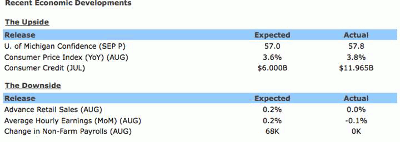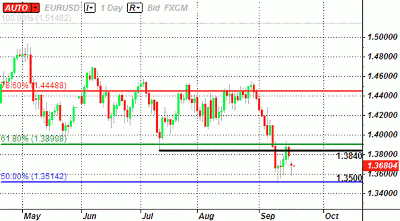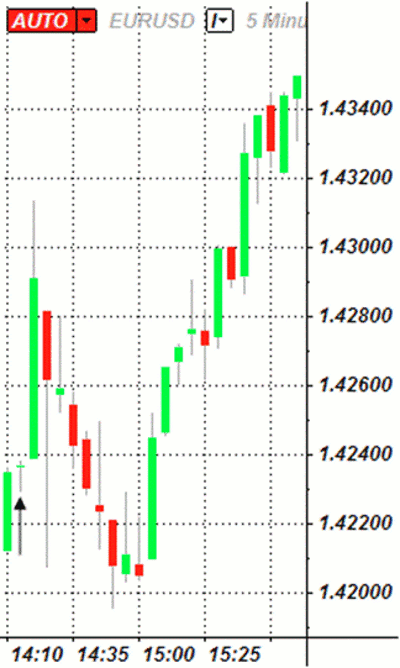Currency traders will be watching the Federal Reserve’s decision on interest rates and comments about future policies, the impact of which will weigh heavily on the dollar, euro, and other major currencies.
Expected Data
Time of Release: 09/21/2011 18:15 GMT, 14:15 EST
Primary Pair Impacted: EUR/USD
Expected: 0.25%
Previous: 0.25%
DailyFX Forecast: 0.25%
Why Is This Event Important?
Although the Federal Reserve is widely expected to retain its zero-interest-rate policy in September, the statement accompanying the rate decision is likely to heavily influence the US dollar (USD) as the central bank looks to employ a broad range of tools to stimulate the ailing economy.
In turn, dovish comments from the Federal Open Market Committee (FOMC) are likely to spark a bearish reaction in the reserve currency, and we may see the dollar give back the advance from earlier this month as the central bank casts a dour outlook for the world’s largest economy.
On the other hand, the Fed may endorse a wait-and-see approach, as policymakers expect economic activity to gather pace over the coming months, and a balanced statement should help to prop up the greenback as market participants scale back speculation for additional monetary stimulus.
Here’s how recent economic releases have gone:
Heightening price pressures paired with the ongoing expansion in consumer credit may encourage the FOMC to strike an improved outlook for the region, and a positive statement may lead the EUR/USD to threaten the rebound from 1.3494 as it curbs the risk of seeing another round of quantitative easing.
However, the protracted recovery in the labor market along with the slowdown in wage growth may open the door for further easing, and the Fed may come in with a large package to stimulate the economy in an effort to mitigate the risk for a double-dip recession.
In turn, the recent strength in the greenback is likely to taper off, and the EUR/USD may retrace the sharp decline from earlier this month as the Fed takes extraordinary steps to balance the risks for the region.
Here is a chart of potential price targets in the EUR/USD currency pair:
NEXT: How to Trade This Event Risk
|pagebreak|How to Trade This Event Risk
As the Fed keeps interest rates on hold, trading the given event risk is certainly not as clear cut as some of our previous trades, but a positive policy statement could set the stage for a long US dollar trade as investors scale back speculation for further easing.
Therefore, if the FOMC softens its dovish tone for monetary policy, we will need to see a red, five-minute candle following the announcement to generate a sell entry on two lots of EUR/USD.
Once these conditions are met, we will set the initial stop at the nearby swing high or a reasonable distance from the entry, and this risk will establish our first objective.
The second target will be based on discretion and we will move the stop on the second lot to cost once the first trade reaches its mark in order to preserve our profits.
On the other hand, the Fed may turn increasingly dovish as the slowdown in economic activity dampens the outlook for inflation, and the central bank may look to employ a range of tools to stimulate the ailing economy in an effort to stem the risks for a double-dip recession.
As a result, if the Fed announces another quantitative easing program and implements additional tools to address the slowing recovery, we will carry out the same approach for a long EUR/USD trade as the short position laid out above, just in the opposite direction.
After maintaining its current policy in August, the Federal Reserve pledged to retain the zero-interest-rate policy until the middle of 2013 and went on to say that the committee is “prepared to employ” additional tools to stimulate the ailing economy, as the recovery is “considerably slower” than initially expected.
However, Richard Fisher, Charles Plosser, and Narayana Kocherlakota all dissented against the majority to mark the biggest rift since 1992, and we may see a growing split within the FOMC as the fundamental outlook remains clouded with high uncertainty.
Nevertheless, it seems as though Fed chairman Ben Bernanke will extend the easing cycle in an effort to encourage a sustainable recovery, and the central bank head may enlist a range of policy tools to prop up the real economy as the central bank curbs its outlook for growth and inflation.
The immediate reaction to the rate decision was short-lived, as the EUR/USD fell back to 1.4200, but the dollar struggled to hold its ground heading into the end of the day as the exchange rate closed at 1.4377.
By David Song, currency analyst, DailyFX.com

























